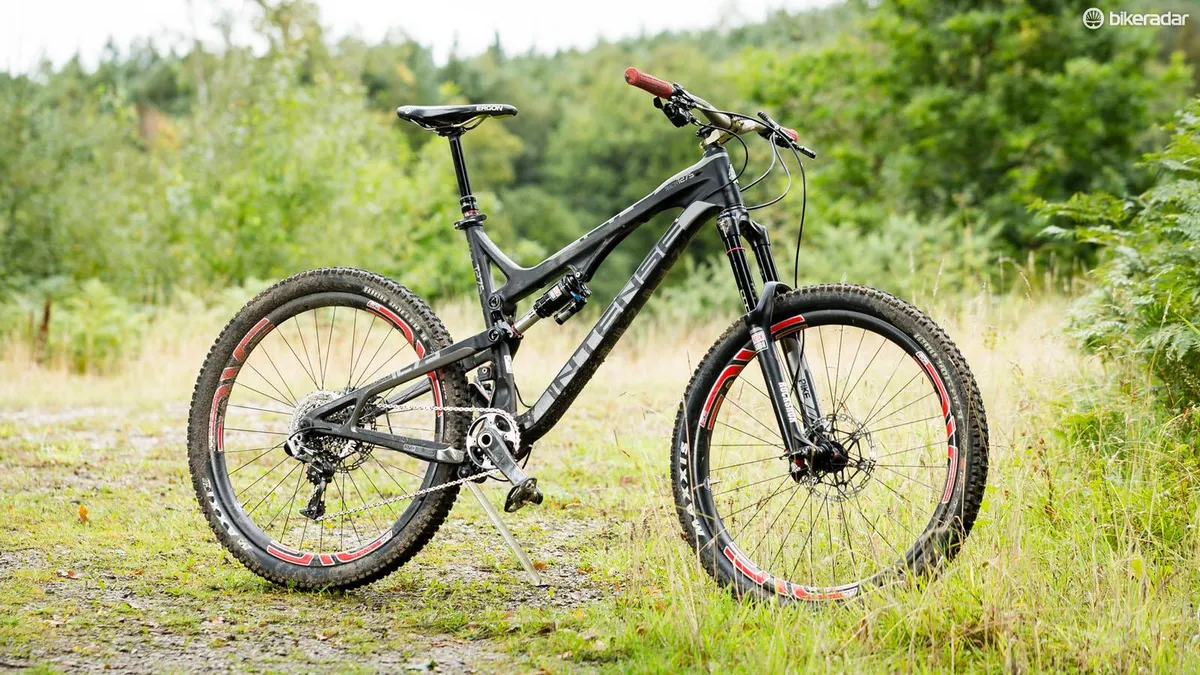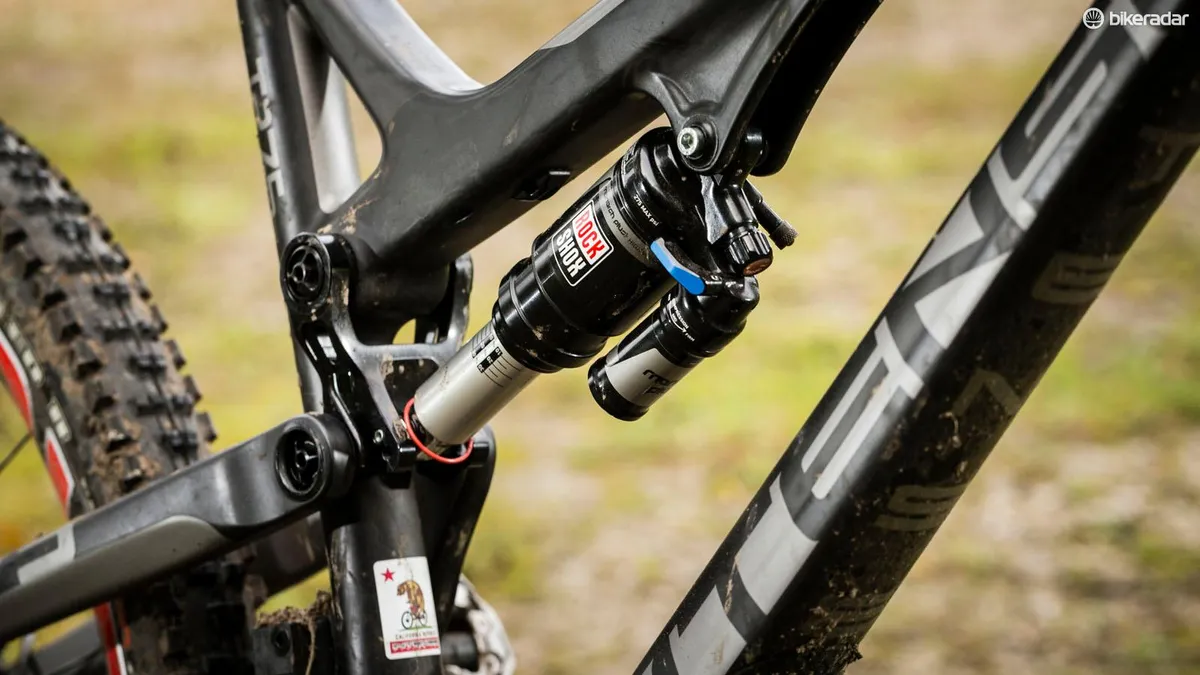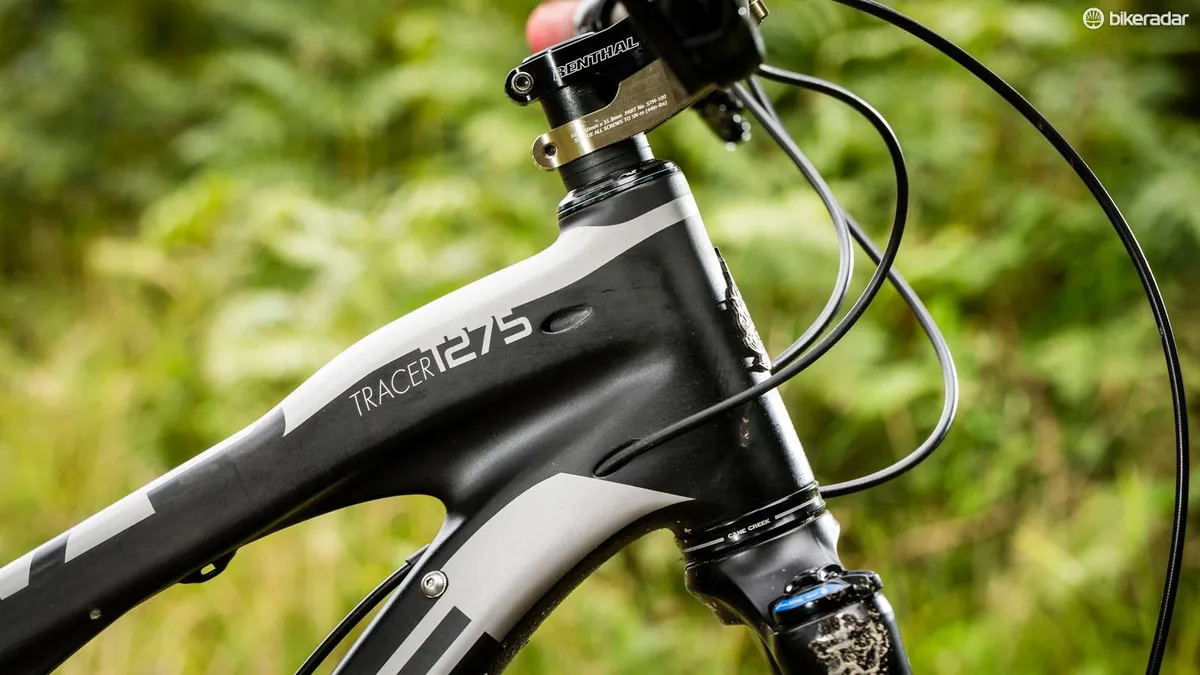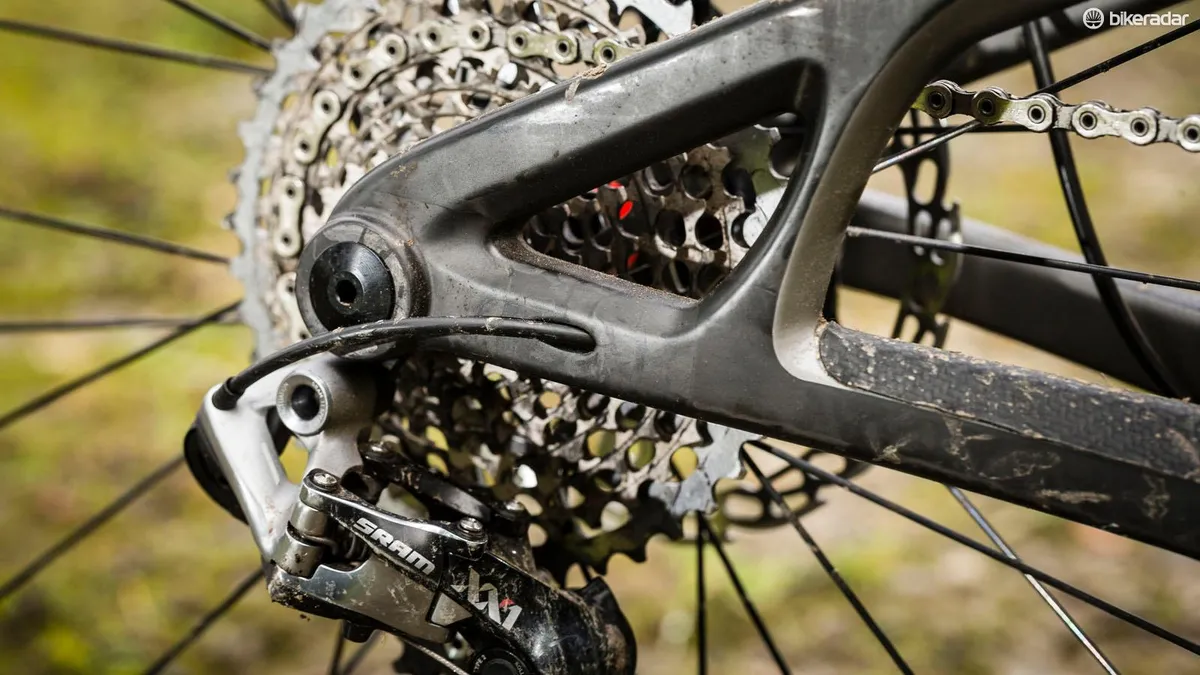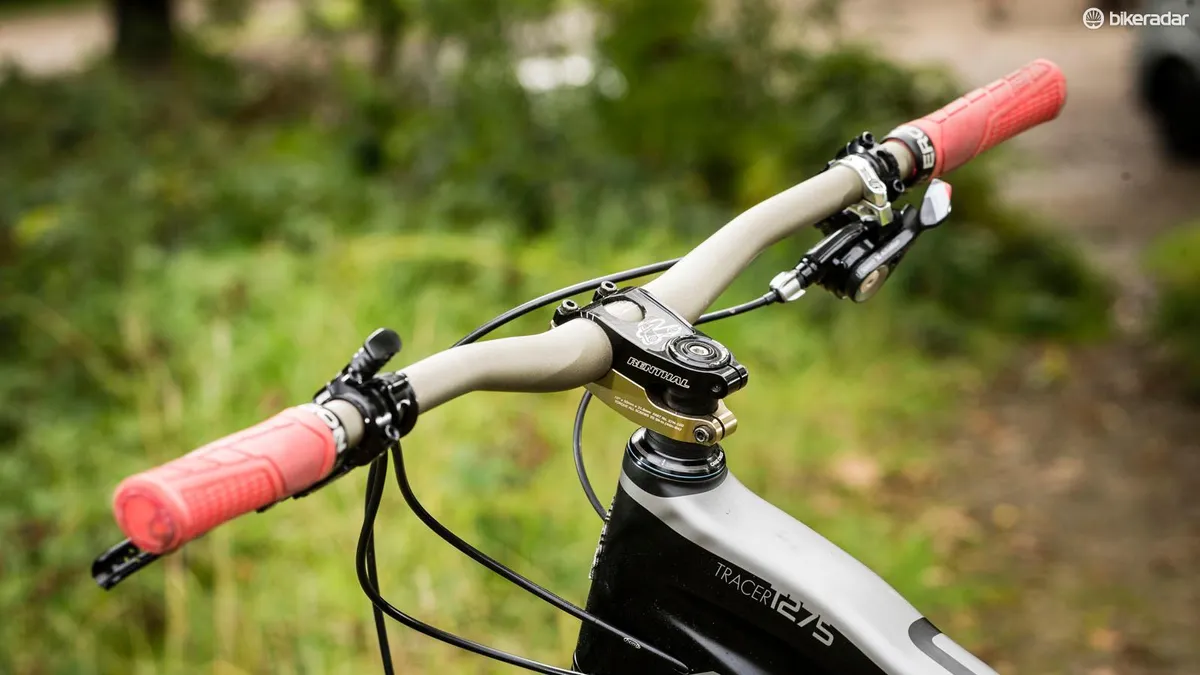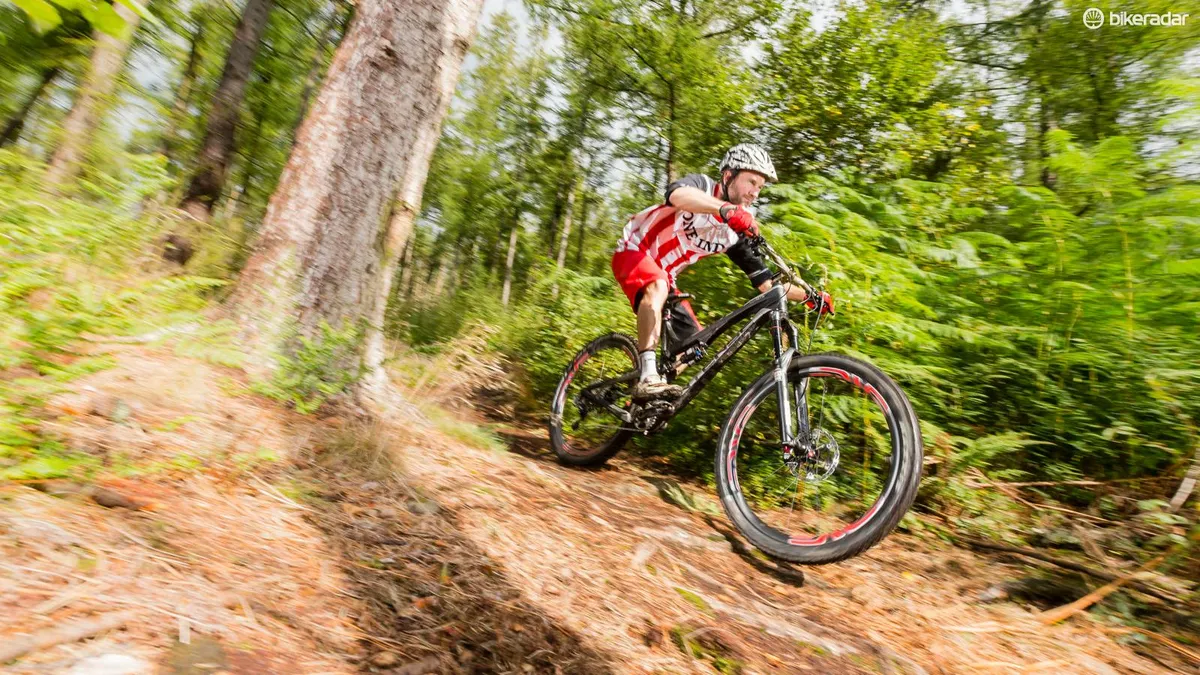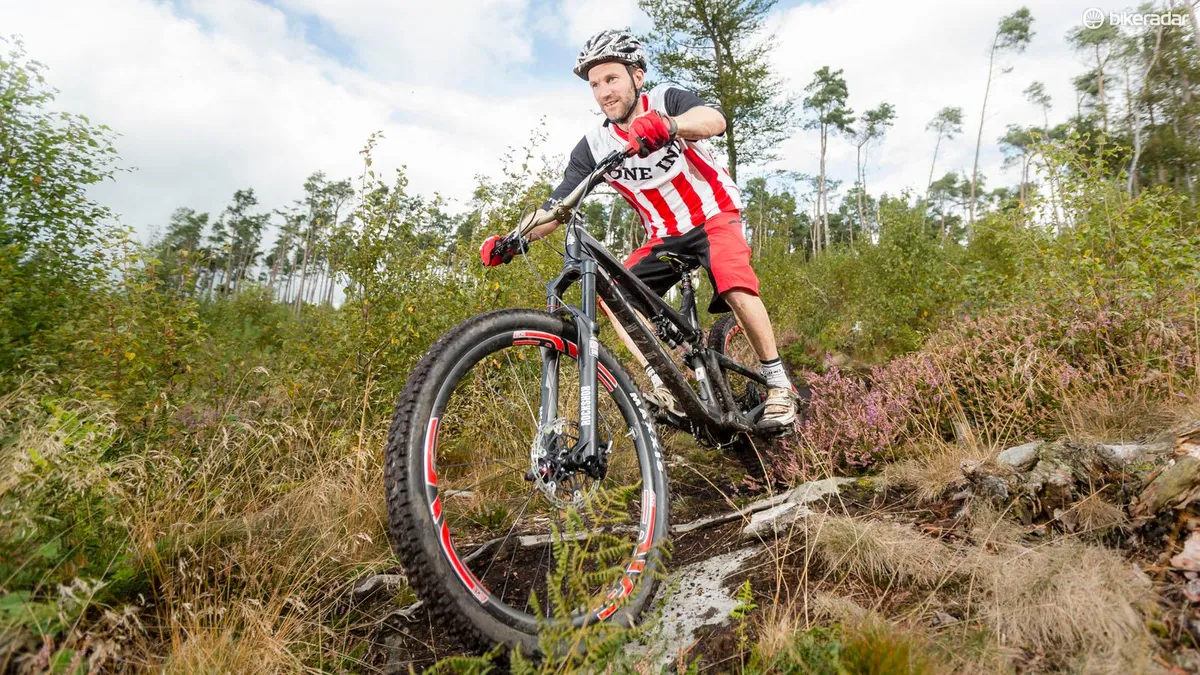Intense's Tracer 275C, billed as the "definitive carbon enduro bike" on its release in early 2014, is no longer such a young steed.
That’s great in terms of being a proven, trail-tough long-travel chassis that can handle some serious hammer, but it does mean this Southern Californian icon is starting to feel slightly long in the tooth compared with the latest machines.
Ageing suspension
Indeed, you could argue that elements of the Tracer were approaching obsolescence even our US team originally put it through its paces in March 2014. While Intense's 'super-enduro' Uzzi has recently been updated with a linkage change – similar to the Santa Cruz Nomad – the Tracer uses an older version of VPP with a long lower linkage hanging below the bottom bracket.
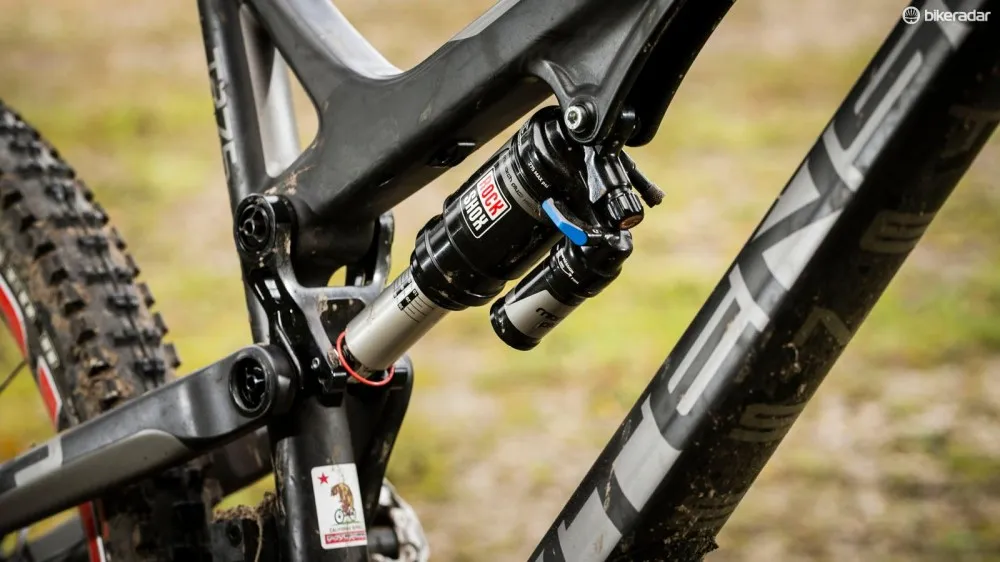
The carbon front and rear triangles may be made in Asia but the upper and lower suspension links are CNC machined at Intense's factory in Temecula, California
This increases chain growth when the shock compresses, giving very direct power delivery and tons of traction feedback for solid acceleration snap.
Off the power the rearward wheel path swings out of the way of square edged hits more easily, so the Tracer sucks up rocky steps, water bars, drainage ditches, and other momentum- and wheel-killing impacts incredibly well. It’s also easy to squash the back wheel down and lift the front for drops, launches or manuals.
That makes the Tracer a great match for dynamic, aggressive riders who like a bike that reacts and communicates through their feet, rather than an obediently neutral ‘background’ bike.
Kick back
Like most Intense characters (sorry), the Tracer won’t be to everyone’s tastes and, again, much of that is down to the VPP suspension. The chain growth means that pedalling works directly against small bump sensitivity so it can skip about or spit traction suddenly if you’re going full gas.
Big hits jerk the cranks backwards noticeably too, which can choke pedalling rhythm. Occasionally torque and major impacts collide head on, kicking the back wheel off the trail or hanging it up on a rock, and the back end isn’t as stiff as the front.
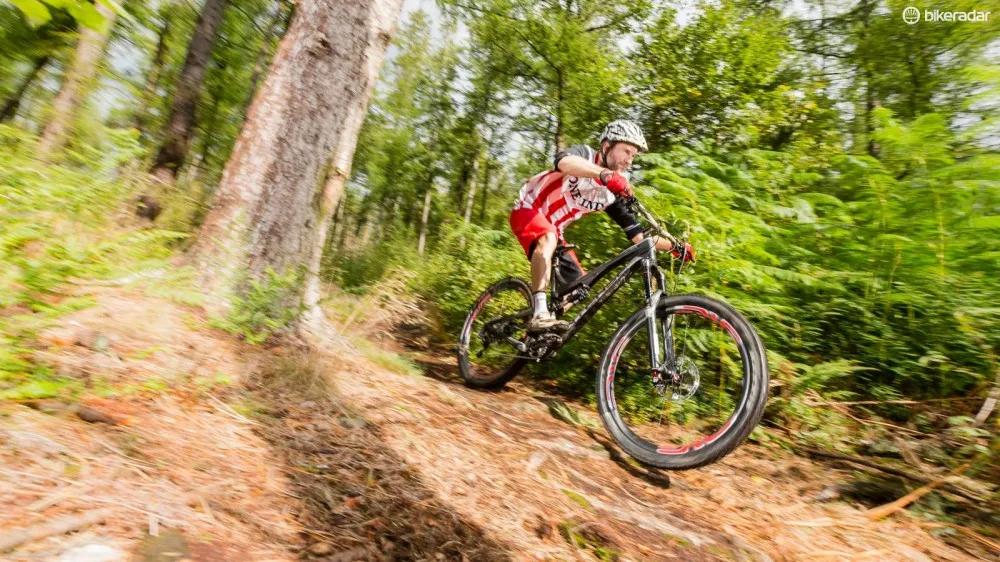
The Tracer mows through momentum-sapping territory with ease
The high (345mm) bottom bracket and obvious pedal- and suspension-related wheelbase and handling-balance changes can also make it lurch or wobble at slow speeds on stop/start technical singletrack.
Frame stiffness is excellent through the main triangle and contributes to the bike's confident feel. We were consistently able to aggressively drive the front end through rocky sections of trail without being bounced off-line.
Things are a little different out back, though, as the rear end's lateral rigidity can't quite keep up. We noticed some wag on more demanding trails, especially when loading up out of a bermed corner.
Low profile
The 275C's profile is low-slung with lots of clearance over the top tube, Intense's distinctively flared front end, an enormous down tube, and the one-piece rear triangle with a single reinforcing strut tying the stays together.
ISCG05 mounts are built into the bottom bracket shell, there's a high direct-mount tab for the front derailleur, a tapered head tube, and the same CNC-machined upper and lower suspension links as on the alloy bike.
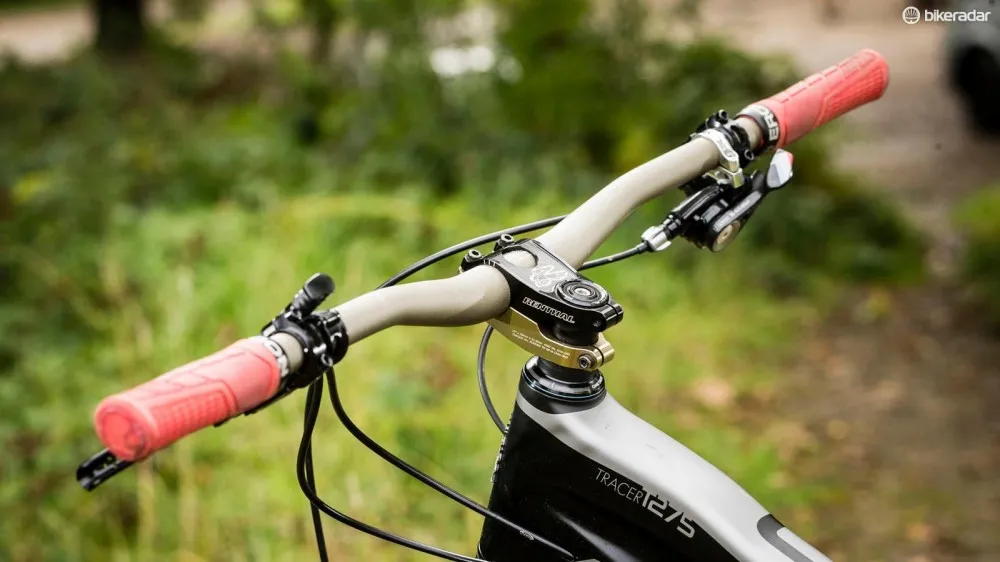
Renthal supplies the classy cockpit
Cable routing is internal, with fully guided paths through the main triangle for easy servicing. Stealth routing is included for dropper seatposts, too, although it's primarily run across the top of the down tube (Intense says a full internal path would produce too tight a bend at the bottom bracket for cable actuated posts). If you aren't running a shock with a piggyback reservoir, the new routing also leaves enough room inside the main triangle for a single water bottle.
The laundry list of quality parts on our most recent test bike included SRAM's XX1 drivetrain, Enve Composites AM 27.5 carbon wheels built around DT Swiss 240s hubs, RockShox's 160mm-travel Pike RCT3 fork, a Renthal cockpit, Maxxis High Roller 2 treads and a RockShox Reverb Stealth dropper seatpost.
We've said much in the past about most of the items listed and it should suffice to say that many of us at BikeRadar would make similar choices for our own bikes (assuming a healthy budget, of course). SRAM's XX1 drivetrain has proven to be a quick-shifting and reliable performer and the RockShox Pike remains a staff go-to.
While the Tracer is showing its age in terms of geometry and obvious pedal feedback, it’s still a distinctively interactive and involving bike for people who want a dynamic rather than neutral ride.
Spec as tested
- Size tested: L
- Sizes available: S, M, L, XL
- Weight (complete bike): 12.6kg
- Frame: Intense carbon
- Fork: RockShox Pike RCT3 160mm
- Shock: RockShox Monarch Plus RT3 160mm
- Crankset: SRAM XX1
- Shifters: SRAM XX1
- Derailleur: SRAM XX1
- Chain: SRAM XX1
- BB: SRAM GXP Ceramic
- Cassette: SRAM XX1 10-42T
- Hubs: DT Swiss 240
- Rims: Enve AM carbon
- Tyres: Maxxis High Roller II 27.5x2.35in
- Brakes: Hope Tech X2 180mm
- Bar: Renthal Fat Bar Lite alloy 750x31.8mm
- Stem: Renthal Apex 50mm
- Grips: Ergon Pro
- Seatpost: RockShox Reverb 125mm
- Saddle: Ergon Pro
- Headset: Cane Creek
